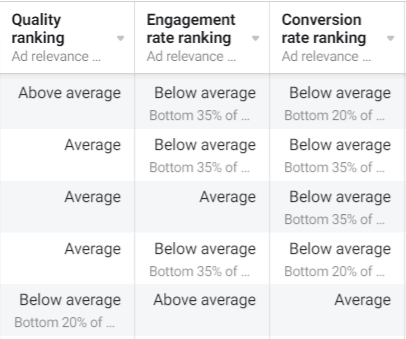Ever share content to your socials and wonder why it didn’t gain more traction? Perhaps you didn’t pick the right audience strategy or posted at a poor time of day. Both are plausible, but perhaps even more significant is that your ad never made it into your target’s feed in the first place. If you’ve ever pondered how social networks determine what content to serve their users, then dive with us into the concept of ad quality scores.
What Are Ad Quality Rankings?
An ad quality score is a rating assigned to creative based on how relevant the platform believes it is to your audience. It’s a collection of signals social algorithms use to determine how much your creative will resonate with the users of the platform. The criteria is comprised of things such as post recency, relatability to an individual’s interests, the quality of the images, and even the ad format.
Let’s examine how one particular platform determines its rankings. In Facebook’s words, “Quality ranking explains how your ad’s perceived quality compares to ads competing for the same audience. We measure ad quality through various signals, such as feedback from people viewing or hiding the ad and assessments of low-quality attributes in the ad, such as withholding information, sensationalised language and engagement bait.”
Platform’s algorithms will also take note of the attention content is getting and how quickly. Positive interaction, such as likes and comments will increase a post’s visibility. Negative actions like requests to hide or block will suppress a post.
Facebook is one of the most transparent platforms with regards to these scores, providing three simple readouts of each ad; above average, average, and below average.
Facebook is far from the only platform that relies on rankings to serve content. Every platform has a stake in ensuring their users continue to have positive experiences that keep them coming back. After all, with all advertisers vying for eyeballs on site, the most valuable resource for a platform continues to be a user’s time.
How do Quality Scores impact Ad Performance?
There are levels of impact when it comes to ad quality scores, which vary depending on the ad objective selected.
Upper funnel activities such as reach and awareness campaigns are less impacted by scoring. This is because the main goal of these campaigns is to educate on a product or brand users aren’t familiar with.
On the other hand, conversion objectives, such as signups and purchases, take a hit with low scoring. Thankfully Facebook also provides both Engagement and Conversion Rate Rankings for lower funnel objectives to further aid in your analysis of ad quality. It’s worth taking note of all three indications, as low scores can lead to undesired results such as high cost per action and low reach.

How to Improve Social Ad Quality Rankings
A poor scoring can be quickly fixed with the right optimizations. To improve your score:
- Revisit your audience strategy.
- Consider whether your product or offering is applicable to the selected audience. Are you reaching the right age group or income level? Are people in a location where they can easily access your product? Are you leveraging high intent audiences such as Look-a-likes or CRM lists to reach people most likely to engage?
- Take a look at your average ad frequency. If your audience is too small you may risk inundating people with a message they aren’t responding to. This is a surefire way to rack up negative responses.
- Test out different formats
- Different people respond to different ad formats. If your static ad isn’t getting the message across, test out a video or a carousel to better communicate your offering.
- User Experience
- It sounds obvious, but make sure your ad works. Check that your links are functioning. Check that coupons or offers are still valid and that the website loads in an appropriate amount of time.
There are plenty of ways to measure your ad impact but the relevance score is a great place to start! Give your ads the best shot to perform and stand out for the right reasons every time with a high score.
If you have any questions about social ad quality rankings, we’d love to hear from you.
Click here to read our previous blog post.